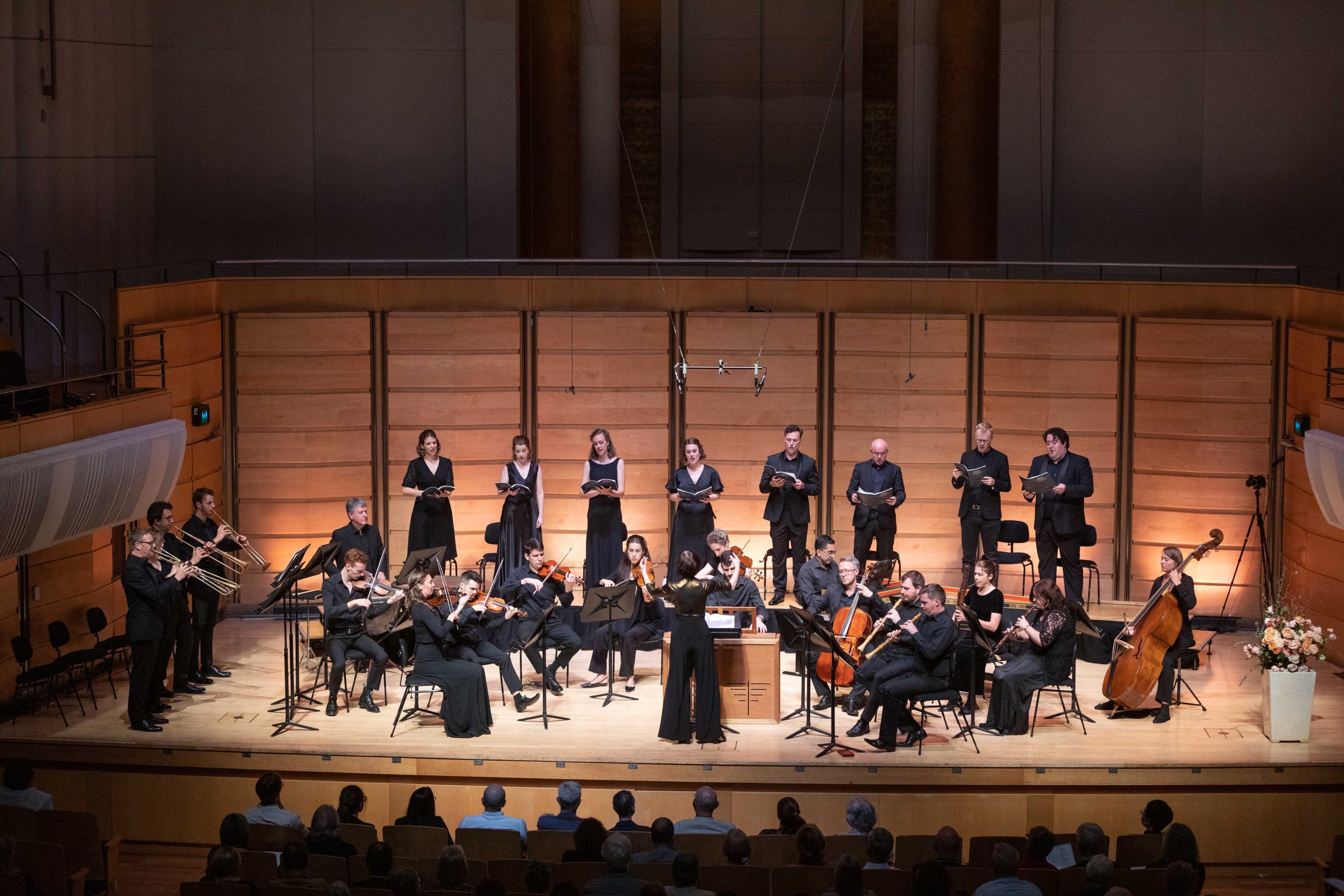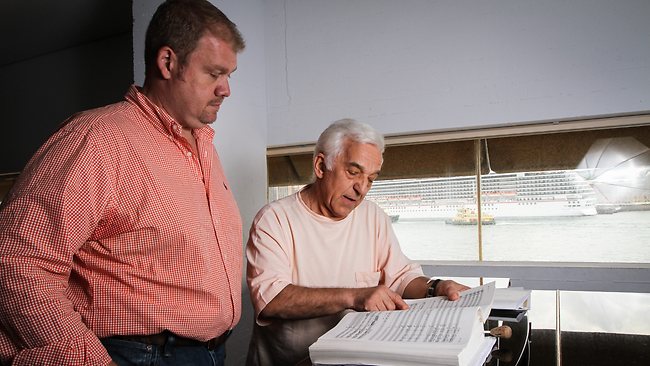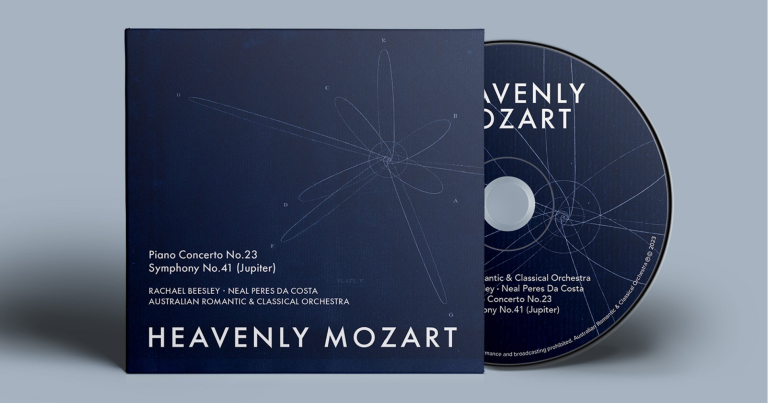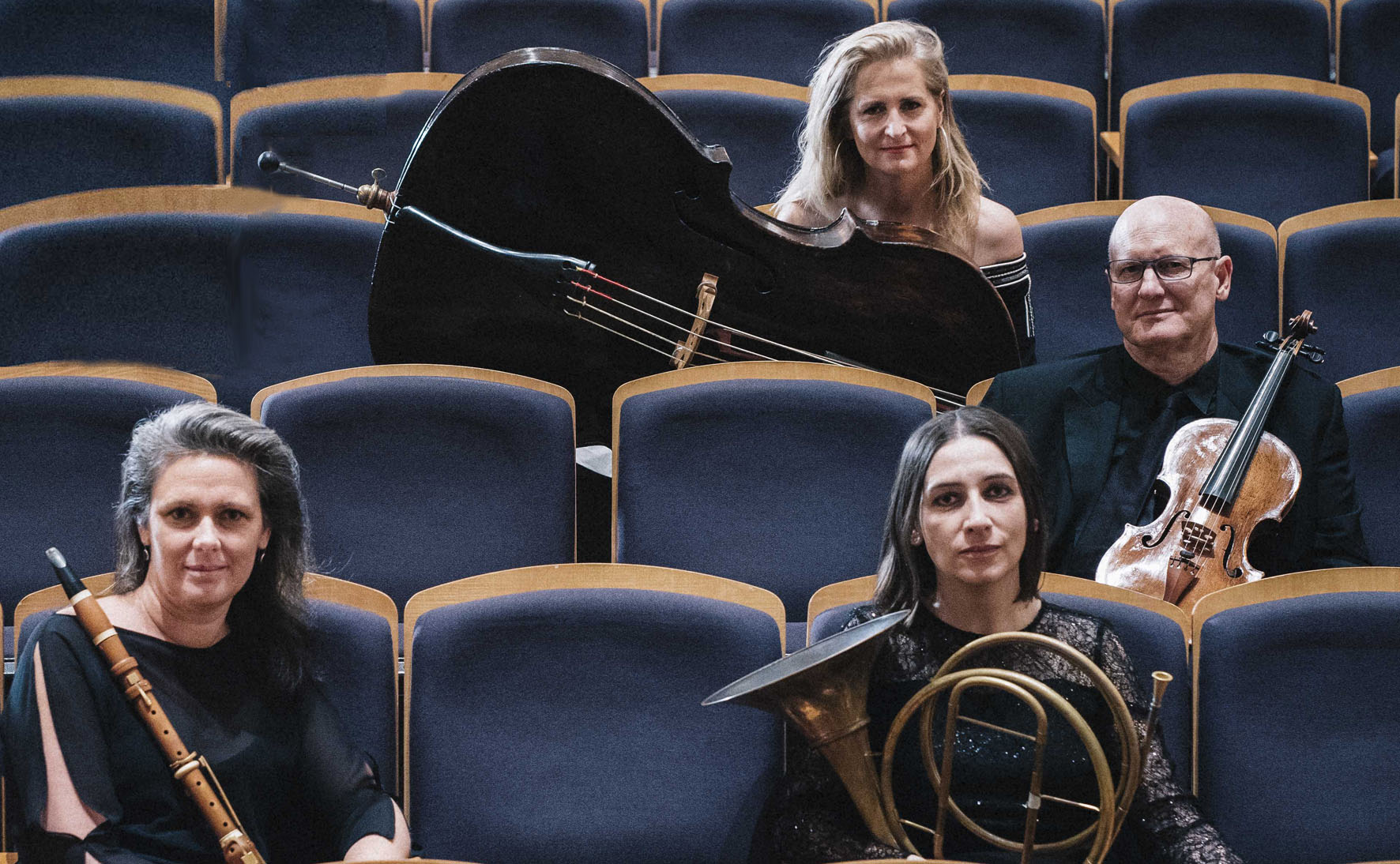Review: Grazie in Grazia/ Bach Akademie Australia
Grazie in Grazia/ Bach Akademie Australia
City Recital Hall,
14 November 2022
Before Johann Sebastian Bach there was his German compatriot Heinrich Schütz, a century earlier; and before them, Claudio Monteverdi and the other Italians, Tarquinio Merula and Giovanni Gabrieli. The Bach Akademie Australia directed by its founder, Madeleine Easton comprising a vocal ensemble of eight and two dozen instrumentalists playing period instruments, contrived a happy confluence of music by these composers in its program Grazie in Grazia, which ascended through the music of Bach’s predecessors, culminating in his festive cantata Christen, ätzet diesen Tag BWV 63.
It was an evening of outstanding music-making, marking the debut of the ensemble at Sydney’s City Recital Hall, leaving me with the unenviable task of translating this sublime experience into words. The concert was one of the best in programming and performance by the BAA that I have attended, warmly endorsed by the audience.
The two-part program of Grazie in Grazia, featured music by the Italians followed by the music of the Germans. Monteverdi’s Messa a quattro voci da cappella from the Selva morale e sprituale, was the centrepiece of the first half, interspersed with instrumental amuse-bouche by Gabrieli and Merula, the entire ‘invention’ – to use one of Bach’s terms – flanked by two fanfares from the highest loggia above the stage.
Rich with dynamic contrast in the opening fanfare, the brass and timpani led us to the Introitus, Kyrie and Gloria of the mass with accompanying chants and an organ interlude by Nathan Cox. The introits sung by tenor Koen Van Stade and bass Andrew O’Connor were seamlessly blended and the choir delivered Monteverdi’s brilliant writing in strict polyphonic style encompassing his variety of patterns, rhythms and other devices. A sombre Kyrie and a gently phrased and beautifully blended Christe eleison paved the way for a contrasting Gloria, brimming with laughing lines, the choir’s insistent repetition of which conveyed a sense of fervent and joyous release. It is traditional to omit the Gloria during Advent but we are not quite at Advent yet and it’s a Gloria that is too good to miss.
Enter the brassy delight of La Serenissima with Gabrieli’s Canzona due a quattro 1608 as an instrumental interlude. Monteverdi’s mass resumes with an interpolated Credo by another Venetian of the time, Giovanni Rovetta influenced by Monteverdi, and maestro di capella at St Mark’s Basilica in Venice between Monteverdi and Cavalli. Four of the lower voices, alto Stephanie Dillon, tenor Andrew Goodwin, Von Stade and O’Connor presented an achingly beautiful Crucifixus written in descending chromatics before the uplifting Et Resurrexit sung by soprano Susannah Lawergren and Brianna Louwen. Von Stade delivered a very polished Unam sanctam catholicam followed by the tutti Confiteor.
The second instrumental interlude was the Canzon decima settima ‘La Monteverde’ from the Canzoni da suonare, Book 4, opus 1, another Monteverdi inspired cameo starring supremely virtuosic playing by violinist and leader of the instrumentalists Matthew Greco matched by Neal Peres Da Costa at the harpsichord and Daniel Yeadon cello.
The choir returned to end the mass with a mystical Sanctus, its undulating lines leading to a discreetly joyful Hosanna and a rather subdued Agnus Dei, bursting into a closing arpeggiated fanfare from above.
There was more of Monteverdi’s brilliance in the short but very appealing Cantate Domino, a blithesome multi-metric motet for 6 voices (SSATTB) and basso continuo. Four introductory voices exhorted us to make music in praise of God, swelling to the full ensemble. Imitative thirds, spinning dance rhythms, syncopation, tempo changes, hemiolas and onomatopoea with a near-delerious piling on of imitative lines created the magic of this piece.
By programming the music of Schütz, Easton traced a line from Gabrieli who taught Schütz in Venice, and who in turn learnt from Lassus, when he was kapellmeister in Munich. Schütz continued the influence of Italy in the German canon, evident in his motet Alleluia: Lobet den Herrn, with German text but indisputably written in the intricate Venetian style including the use of cori spezzati, which divided the musical forces into musically, and spatially distinct groups.
Finally, the jewel in the crown, JS Bach’s cantata Christen, ätzet diesen Tag BWV 63 its 7 movements constructed in the shape of an arc kicking off in inimitable, heady style with Simone Slattery leading the orchestra. We had the jubilation of Bach’s dance rhythms, the glory of the natural trumpets, the throb of the timpani, the elaborate recitativi stromentati, the beautiful colours of alto Hannah Fraser, Adam Master’s oboe the third voice in the superb ensemble with Lawergren, riding the high tessitura with plenty of space and O’Connor resonant in the lower register but so much more vibrant in the higher range. Andrew Goodwin transfixed with his delivery of the most important element of the cantata. The recitative for tenor solo, though short is at the pinnacle of the piece, Bach placing the word Gnaden, (grace), at the exact mid-point of the movement, and therefore, of the whole cantata.
This sumptuous and sophisticated music, accompanied by Easton’s comprehensive program notes gave ample opportunities for the singers to perform in solo, in small configurations and tutti, calling for different presentations and blends of the voice. The choir was so mesmerising it was too easy to take for granted the excellence of the instrumentalists. Compliments also to the stage crew whose set up for the Bach cantata was a work of art.
Easton has arrived at a point where she has a handpicked ensemble of players and singers who have a record of rehearsing and performing together regularly. To me, these are the best BAA voices that I have heard in their sound and narrative ability. The instrumentalists as ever were exceptional.
Shamistha de Soysa for SoundsLIkeSydney©
Read our review of BAA’s last concert In Bach’s Orbit.
Image credit Noni Carroll






